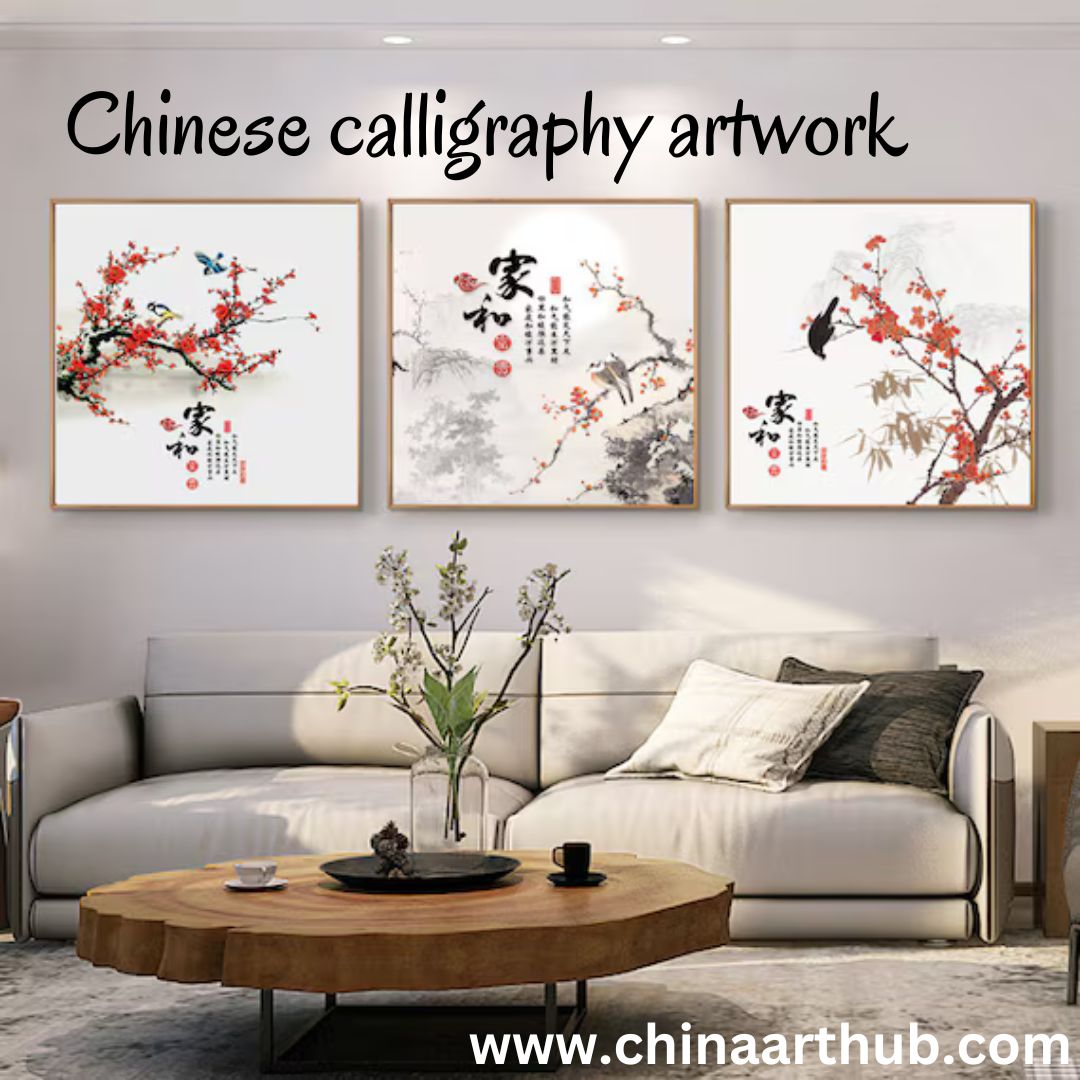
Chinese calligraphy artwork is a timeless artistic tradition that blends culture, philosophy, and technique. Every stroke in this art form carries meaning, and even the same character can appear vastly different depending on the style, brush movement, and the calligrapher’s interpretation. This variation is not a mistake but rather an intentional part of the artistic process, making each piece of calligraphy unique.
The Influence of Calligraphy Styles
One of the main reasons for differences in Chinese calligraphy artwork lies in the various styles used by calligraphers. There are multiple script types, each with its own rules and aesthetic approach. Some of the most notable styles include:
- Seal Script (篆书, Zhuànshū) – This ancient form of writing features rounded and symmetrical strokes. It is often used in decorative inscriptions and has a structured appearance.
- Clerical Script (隶书, Lìshū) – Known for its wider strokes and distinctive horizontal emphasis, this script was widely used during the Han Dynasty.
- Regular Script (楷书, Kǎishū) – A more modern and standardized form, this script is clear, structured, and commonly used in formal settings.
- Running Script (行书, Xíngshū) – This semi-cursive style is fluid, making the characters appear more connected and expressive.
- Cursive Script (草书, Cǎoshū) – A highly abstract and free-flowing style where strokes blend into one another, often making characters unrecognizable to those unfamiliar with it.
Each of these scripts allows for distinct visual interpretations of the same character, contributing to the diversity seen in Chinese calligraphy artwork.
The Role of Brush Technique and Pressure
Chinese calligraphy artwork is deeply influenced by the movement of the brush. A single character can take on different forms based on how the brush is handled. Variations in pressure, speed, and ink application all contribute to the final outcome.
- Light vs. Heavy Pressure – Applying different levels of pressure creates thick and thin strokes, adding depth to the character.
- Fast vs. Slow Movements – Quick strokes can make the artwork appear energetic, while slower strokes give a more controlled and refined look.
- Ink Saturation – The amount of ink used affects the richness of the strokes. Some calligraphers prefer a drier brush for texture, while others use fully inked brushes for a bold effect.
Since brush techniques vary between artists, the same character written by different calligraphers will always have a unique look.
The Personal Expression of the Calligrapher
Chinese calligraphy artwork is not just about writing; it is an expression of the artist’s emotions and philosophy. The way a calligrapher writes a character reflects their mood, personality, and even life experiences. Some artists prefer bold, strong strokes, while others create delicate, flowing lines.
Historically, famous calligraphers were known for their distinctive styles. For example, Wang Xizhi, a renowned calligrapher from the Jin Dynasty, was celebrated for his fluid and graceful strokes. Meanwhile, Yan Zhenqing from the Tang Dynasty was recognized for his powerful and structured calligraphy.
Because calligraphy is seen as an extension of the artist’s character, no two pieces are ever truly identical.
Cultural and Philosophical Influences
Chinese calligraphy artwork is deeply connected to traditional philosophy and aesthetics. The principles of Yin and Yang influence how strokes are balanced, while concepts from Daoism and Confucianism emphasize harmony and discipline in writing.
Additionally, poetry and calligraphy often go hand in hand. Many calligraphers inscribe classical poetry onto their works, adding layers of meaning and artistic value. The style in which a poem is written can change the viewer’s perception, making each piece a deeply personal and cultural expression.
The Impact of Different Materials
The materials used in Chinese calligraphy artwork also play a role in how characters appear. Different types of brushes, ink, paper, and even the surface on which the calligraphy is created can affect the final outcome.
- Brush Type – Soft brushes create smooth, flowing strokes, while stiff brushes produce sharper, more defined lines.
- Ink Consistency – Traditional ink is ground from ink sticks and mixed with water. The thickness of the ink changes the density of the strokes.
- Paper Absorption – Some papers absorb ink quickly, causing strokes to spread, while others allow for finer control.
- Writing Surfaces – While rice paper is commonly used, calligraphy can also be done on silk, wood, and even stone, each providing a different texture and appearance.
These material variations contribute to why the same character may look different in different pieces of Chinese calligraphy artwork.
Historical and Regional Variations
Calligraphy styles have evolved over centuries, with different dynasties favoring different approaches. Additionally, regional influences have led to stylistic differences. Calligraphy from northern China may have a more structured appearance, while southern styles might emphasize fluidity and elegance.
Throughout history, emperors, scholars, and artists have contributed to the evolution of Chinese calligraphy artwork, each leaving behind their own unique mark. This ongoing development ensures that no two pieces ever look the same, even if they contain the same characters.
Why Every Calligraphy Artwork is Unique
The beauty of Chinese calligraphy artwork lies in its individuality. Each piece carries the essence of the calligrapher, influenced by style, technique, materials, culture, and history. While the written characters may be the same, the artistic expression behind them ensures that every work remains distinct.
This uniqueness is what makes Chinese calligraphy artwork highly valued. Whether displayed in homes, temples, or museums, these pieces serve as both artistic masterpieces and cultural treasures.
Conclusion
Chinese calligraphy artwork is more than just writing—it is an evolving art form rich with history, technique, and personal expression. The variations in how a single character appears come from the diversity of scripts, brush techniques, artistic emotions, and cultural influences.
Each stroke tells a story, making every piece of Chinese calligraphy artwork a one-of-a-kind creation. This timeless tradition continues to inspire and captivate people around the world, preserving its place as a vital part of artistic and cultural heritage.